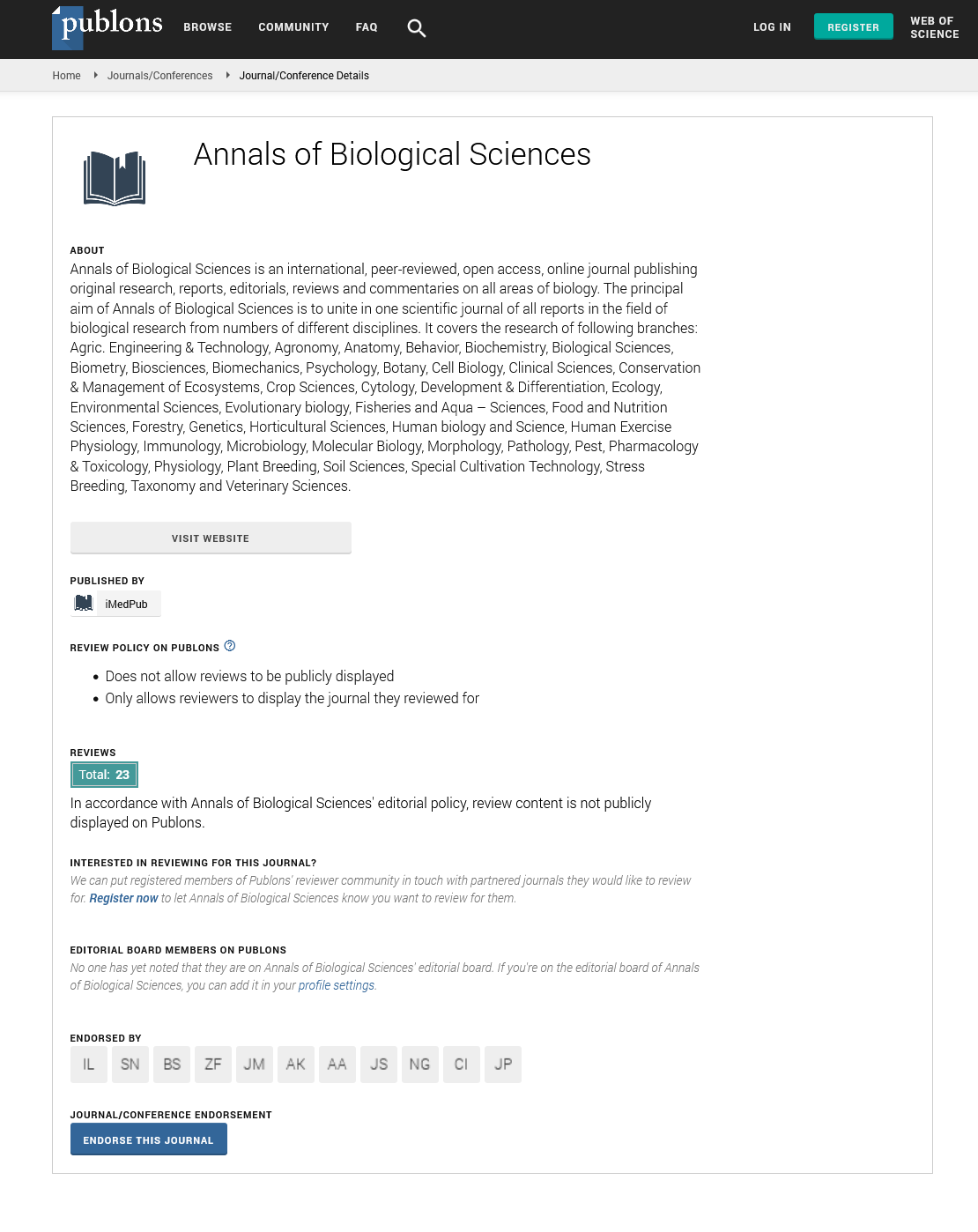ISSN : 2348-1927
Annals of Biological Sciences
Abstract
Enzymes Involved in Glycosylation Have Critical Determinants in ER-Golgi Trafficking
All living cells produce a structurally complex and compositionally varied spectrum of glycans and glycoconjugates that are essential for organismal evolution, development, functioning, defence, and survival. GTs accelerate the glycosylation process between activated sugar and acceptor substrate to produce a wide range of glycans. GTs are found in over 130 gene families and have roles in metabolic processes, signal pathways, cell wall polysaccharide formation, cell development, and growth. Glycosylation occurs primarily in the endoplasmic reticulum (ER) and Golgi, where GTs and glycosidases are dispersed to various sites of these compartments and progressively add or cleave various sugars to create glycosylation products.
As a result, delivering these enzymes to the right regions in the cell, the glycosylation sites, is critical and includes multiple secretory route components. This study summarises the current level of knowledge on protein trafficking processes between the ER and the Golgi. It summarises what is known about the fundamental components of protein sorting machinery and trafficking, which are recognition sites on the proteins that are crucial for their interaction with the critical components of this machinery.
Author(s): Erica Melena*
Abstract | Full-Text | PDF
Share This Article
Google Scholar citation report
Citations : 406
Annals of Biological Sciences received 406 citations as per Google Scholar report
Annals of Biological Sciences peer review process verified at publons
Abstracted/Indexed in
- Google Scholar
- China National Knowledge Infrastructure (CNKI)
- WorldCat
- Publons
- ROAD
- Secret Search Engine Labs
Open Access Journals
- Aquaculture & Veterinary Science
- Chemistry & Chemical Sciences
- Clinical Sciences
- Engineering
- General Science
- Genetics & Molecular Biology
- Health Care & Nursing
- Immunology & Microbiology
- Materials Science
- Mathematics & Physics
- Medical Sciences
- Neurology & Psychiatry
- Oncology & Cancer Science
- Pharmaceutical Sciences
